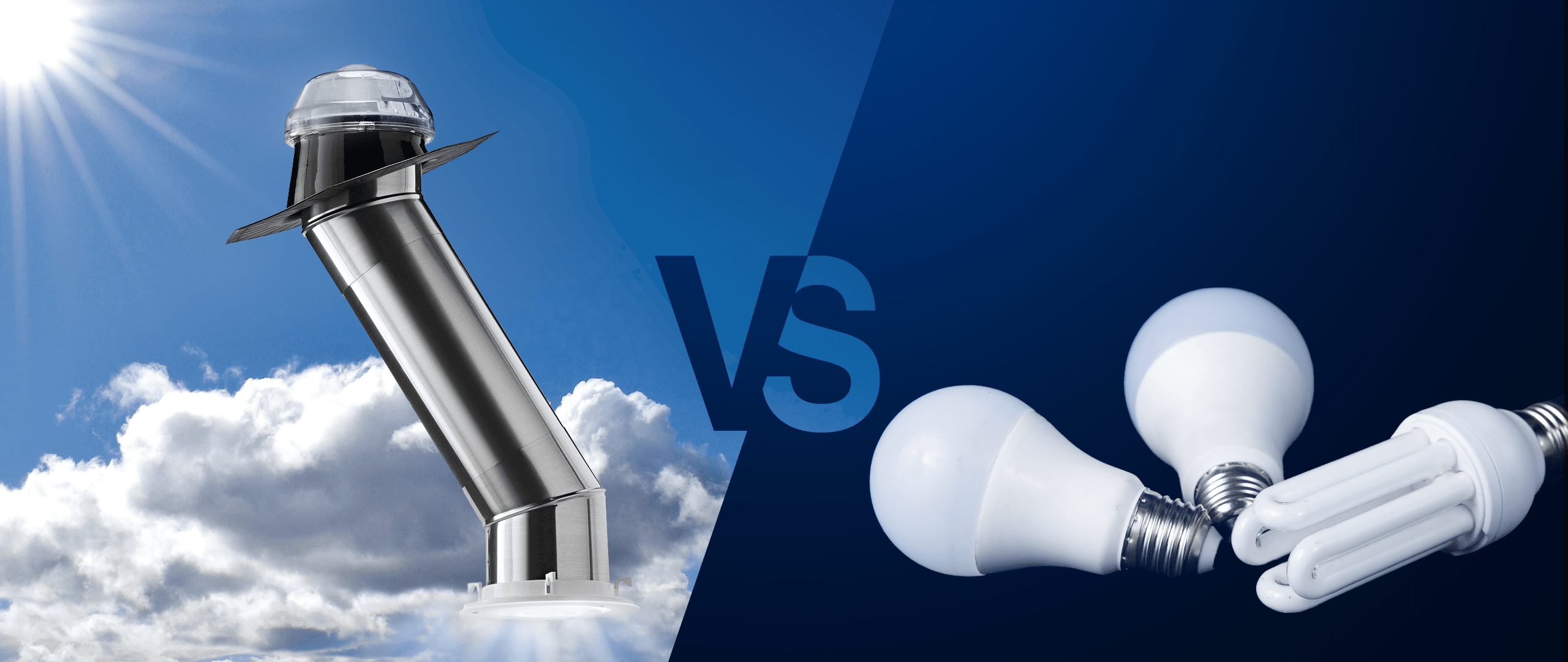Skylights vs. LEDs: Which Is More Energy Efficient?

So, you’ve decided to give your home’s lighting a much-needed upgrade, and now you’re weighing two popular options: skylights or LED lights. It’s a common dilemma for homeowners who want to boost both the look and energy efficiency of their property.
Skylights can flood your home with natural light, creating an inviting atmosphere, while LEDs offer the modern advantage of long-lasting, low-energy illumination. But which option is truly the most energy efficient, and which will save you more money in the long run?
How Energy Efficient Are LED Lights?
There was a time when almost every home in the U.S. depended on incandescent light bulbs to keep rooms lit. These bulbs were simple and widely available – but they were also notorious for consuming a lot of energy.
In recent years, however, LEDs have rapidly become the preferred electric lighting choice of most American households. When you look at the data, it’s easy to see why. According to the US Department of Energy, LEDs use 90 percent less energy and last 25 times longer than the incandescent bulbs we used to use.
This means that a typical LED lightbulb will use about 11 kWh of power per year (assuming it is switched on for around three hours per day).
The US Bureau of Labor Statistics says the average cost of electrical power in the United States currently sits at roughly 18c per kWh – though it can be as high as 40c in some regions.
So, an average American should usually expect to spend around $2 to run a single LED bulb for a year. Though, again, that price can be as high as $4.40 in areas like California and Hawaii.
If you have 25 LED bulbs in your home, you should therefore expect to spend between $50 and $110 per year to keep them running.
How Energy Efficient Are Skylights?
While LED bulbs have revolutionized energy-efficient lighting, skylights offer an entirely different approach to brightening your home. Rather than relying on electric power, both traditional and tubular skylights use natural sunlight to fill your property with free, renewable light. This makes them a truly zero-energy, zero-cost option during daylight hours – which is something no electric bulb can compete with.
In fact, some residential skylights, like the ones produced by Solatube, come with an integrated solar panel that allows them to continue lighting up your house long after the sun goes down. If implemented correctly, this can mean you may never need to turn on the lights in some areas of your home.
The energy benefits of skylights don’t end there, though. A strategically positioned skylight can also help you lower your property’s heating needs during the winter months by allowing passive solar heating – potentially knocking hundreds of dollars off your utility bills in the process.
Should You Choose a Skylight or LED Lighting?
You should choose a skylight. It really is that simple.
While LED lights are a lot more efficient than the bulbs we used in the past, they do still require energy to run – and that energy will inevitably increase your utility bills.
Skylights, on the other hand, do not require any electricity. They can provide you with both light and heat for free all year round. You just can’t get any more energy efficient than that.
However, if you do plan to install a new skylight at your home, you’ll want to follow these tips to ensure it is as efficient as possible:
- Hire an Experienced Installer: Skylights must be installed correctly to avoid leaks and drafts. Poor installation can lead to energy loss and water damage. Hiring a professional ensures that the skylight is properly sealed and insulated, improving both its longevity and efficiency.
- Position the Skylights Strategically: Proper positioning is crucial. Skylights that face north provide lots of light but may not add much heat, while south-facing ones maximize sunlight and warmth. East-facing skylights capture morning light, and west-facing ones add afternoon heat.
- Choose Energy-Efficient Glazing: Opt for skylights with low-emissivity (low-E) coatings and insulated glazing. These can help reduce heat loss during winter and limit heat gain during summer – keeping your home energy-efficient year-round.
- Avoid Oversizing: Skylights that are too large can lead to heat loss in the winter and heat gain in the summer. Select a skylight size that suits your space’s lighting needs without letting in too much heat or cold.
Ready to take the leap and install an energy efficient skylight in your home? If so, all you need to do is pick up the phone and call your local Solatube dealer. They’ll be happy to provide you with all the details you need to make an informed decision.
